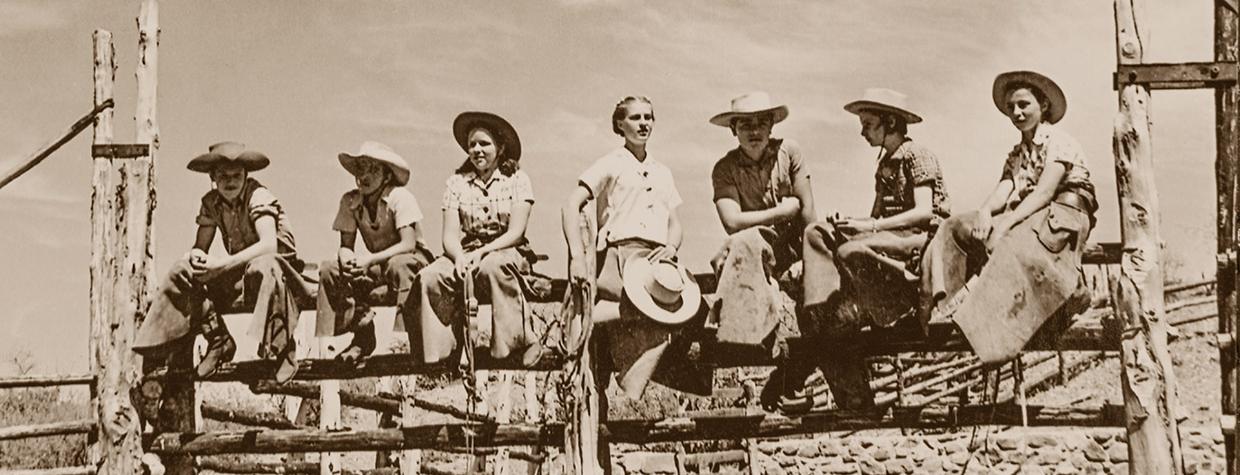Driving the “hogback hills” is not the fastest way to get to the Orme School. But it’s the most scenic. It’s also the best way to imagine what it must have been like for Charles and Minna Orme to caravan their young family through the high desert of Central Arizona. No doubt this wide, dusty road would seem a superhighway to them — the route they traveled to their new ranch in 1929 was hardly more than a cow path.
Traveling along the ridgeline, it’s easy to see how remote the school is; even now, it’s surrounded by Orme Ranch and Prescott National Forest land. It’s about 12 miles before the school finally appears as a green oasis in the valley below, with spreading cottonwood and sycamore trees along Ash Creek. This land buffer may be, in part, why the school has survived for 95 years.
Orme is just one of dozens of ranch schools that flourished in Arizona in the early 20th century, when prominent families sent their kids to live out their dreams of the West. Ranch school alumni included governors, congressmen and other prominent figures. Few of these schools survived past the mid-1900s, and today, Orme alone remains tied to its ranching roots. But these schools formed one of the most interesting chapters in Arizona’s history of education.
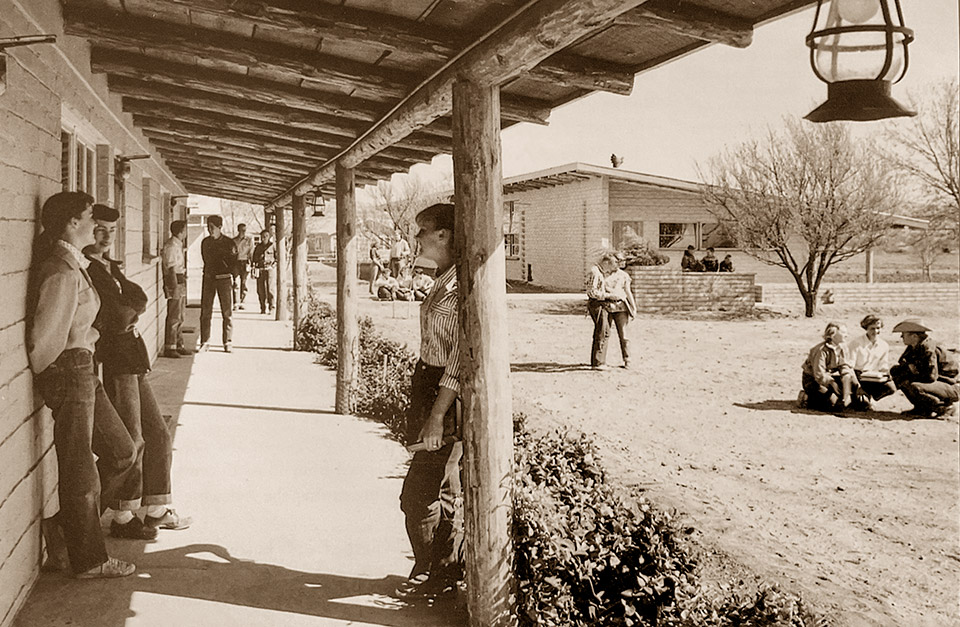
The term “Western ranch school” dates to at least 1928, when a handbook of American private schools listed “college preparatory Western ranch schools” in Arizona, Wyoming, California and New Mexico. In Arizona, these schools peaked in the 1930s, and more than four dozen opened in the state before 1950. Proliferating in tandem with dude ranches, they offered many of the same activities, including horseback riding, cattle roundups and pack trips. Many schools participated in local rodeos or held their own. At Green Fields School, one graduate recalled, every Thursday was “ ‘bring your gun to school’ day.”
Ranch schools advertised in Eastern states, with many opening recruiting offices in New York. And, like early dude ranches, only the wealthy could afford them. In 1927, students at the Arizona Desert School supplied their own horses and paid tuition of $2,500, the equivalent of about $44,000 today. And when the country was in the midst of the Great Depression, students at the Judson School paid $1,600 for tuition, room and board, in addition to bringing their own horses and tack.
To be competitive, ranch schools offered rigorous academic instruction, and many employed faculty with impressive pedigrees. Chuck and Minna Orme had graduated from Stanford; the headmaster of the Arizona Desert School had attended Princeton and Oxford; and faculty at the Evans School held degrees from Cambridge, Oxford and Harvard.
But in addition to classroom instruction, students used the outdoors as their laboratory, studying botany, geology, archaeology and anthropology, sometimes under the guidance of university faculty or professionals. Hacienda del Sol, for example, offered archaeology instruction through its contacts at the University of Arizona, and artist Ted DeGrazia taught painting classes at Fenster Ranch and Green Fields schools.
Described as “a striking-looking man who liked to have a good time,” H. David Evans opened Arizona’s first ranch school in 1902, “with but few rules, and those based on common sense.” A graduate of Cambridge, the British-born Evans came to Arizona seeking a more favorable climate after an athletic injury. He opened the Evans School near Mesa, later adding a second campus near Tucson. “Prof,” as he was called, taught Greek, Latin and “horsecraft.”
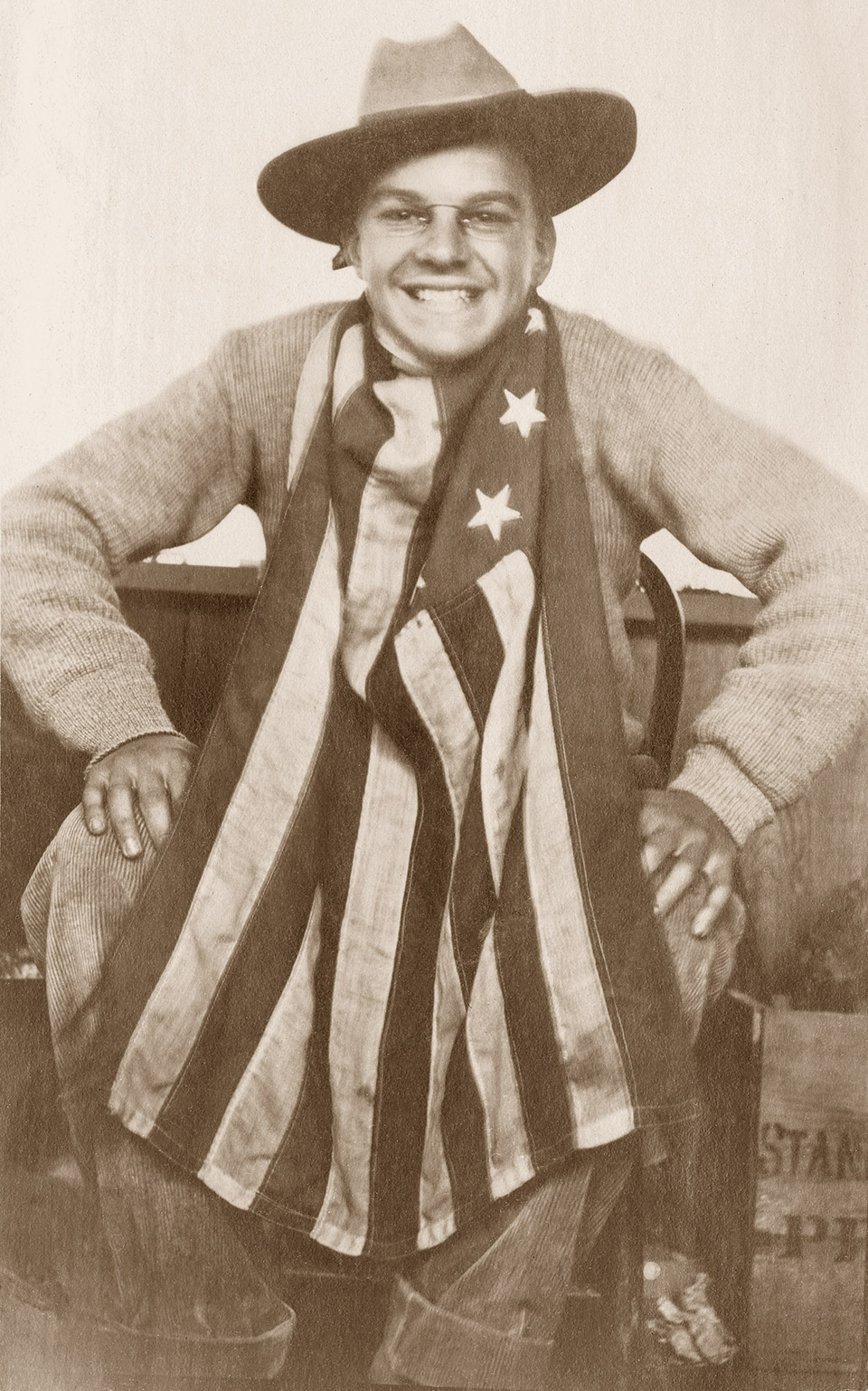
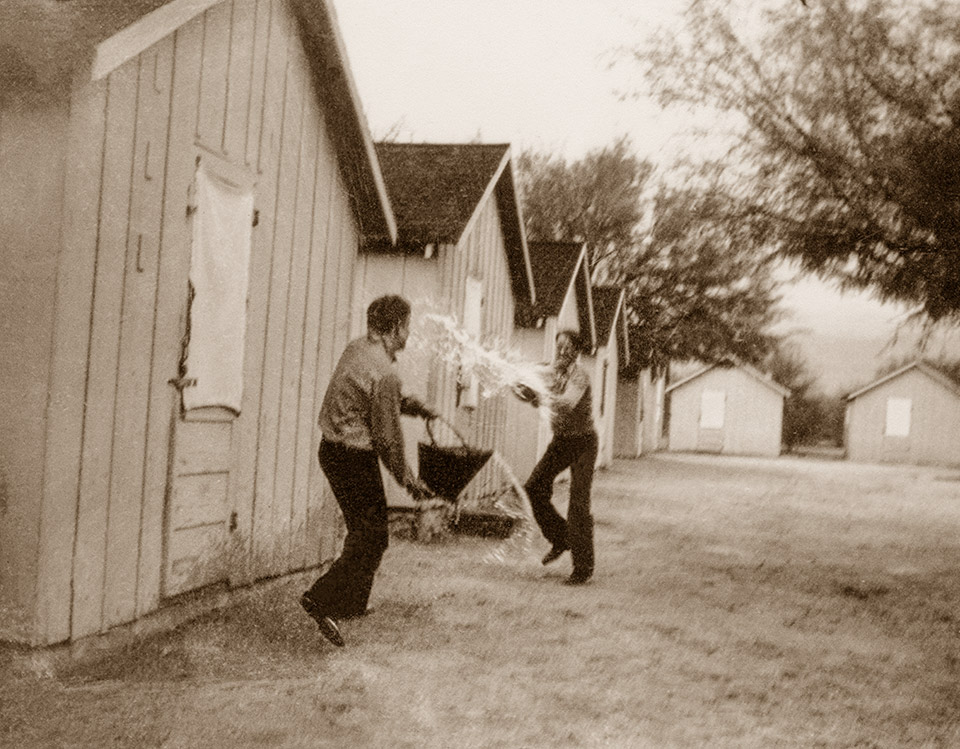
Tucson. | Arizona Historical Society
The school’s premise was that living simply, without servants, would teach pampered boys the pleasure of self-reliance. The school opened with three students and never exceeded 50. Evans intentionally kept enrollment low and admission standards high. “If strangers to the school,” he wrote, “parents should present some satisfactory introduction.”
Douglas Fairbanks Jr. was refused admission because Evans “didn’t want those moving-picture characters hanging around the school.” But surnames on the student roster did include Vanderbilt, du Pont, Cabot, Heinz and Pulitzer. Archie Roosevelt was in his first year at Evans when his father, Teddy, dedicated Theodore Roosevelt Dam in 1911.
Students lived in spartan wooden “tents” with mosquito netting over the windows, and they cleaned stables and took turns waiting tables. A future Massachusetts governor and U.S. senator recalled that he fed his horse, milked cows and practiced football every morning before beginning his studies.
With no set curriculum, each student pursued his own interests. Over the years, those included filming a movie, organizing an orchestra, and studying bats and anthropological sites. A flying club landed planes on the polo field. Riding and roping were as popular as football and baseball, and students competed in local rodeos.
They also embarked on long, unsupervised camping trips on horseback, required only to leave word of their general direction (and, for younger boys, to be accompanied by an older boy). Organized trips took in all of Northern Arizona, including the Hopi Tribe’s land (to watch the Snake Dance) and a 10-day, 200-mile horseback trip to a camp Evans owned near Flagstaff to prepare for college entrance exams, which were administered there.
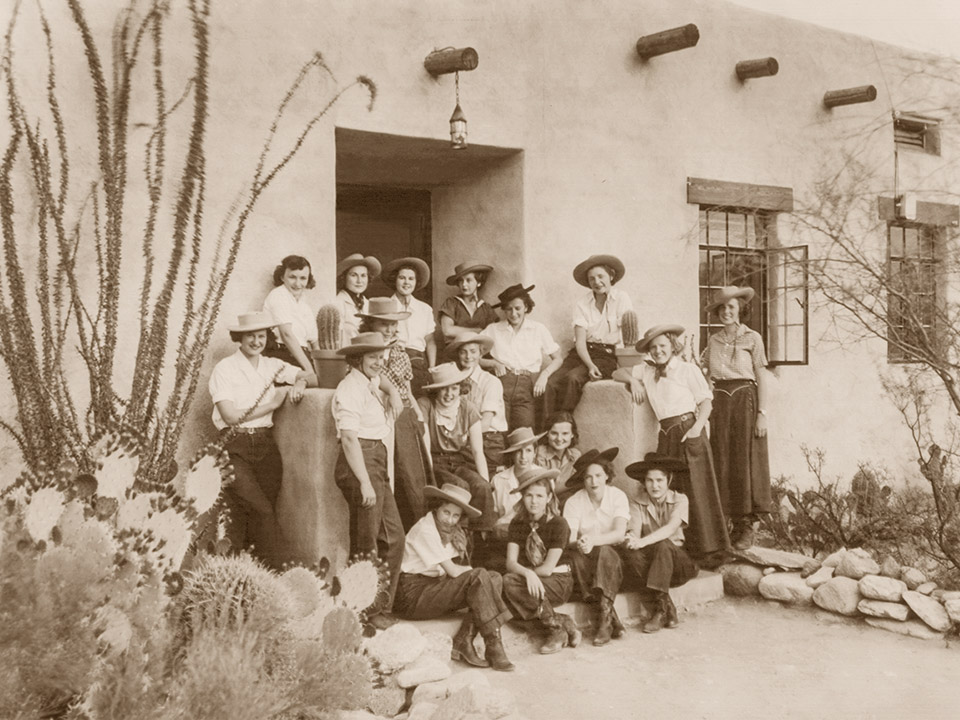
As they proliferated, ranch schools began to specialize. The Thomas School served “delicate children, particularly those suffering from rheumatism, chronic colds, hay fever, bronchial, rheumatic or cardiac afflictions, and asthmatic or sinus conditions.” That is, as long as they weren’t Jewish. For Jewish students with similar ailments, there was the Verdi School.
George and Kitty Fenster brought their children from New York City to Tucson in 1941, hoping the climate would relieve George’s rheumatoid arthritis. A few years later, they opened the Fenster Ranch School to educate kids with rheumatic fever, asthma and related breathing problems. But by the late 1940s, the school had broadened its scope, building a solid reputation as a college preparatory school.
In 1929, Hacienda del Sol became Tucson’s first ranch boarding school for girls. The school held its own rodeo, and students studied painting, modeling, piano, voice, fencing, ballet and sewing. Five years later, the Jokake School, an adjunct of Phoenix’s Jokake Inn, opened as an all-female ranch school.
Charles Orme came from a prominent pioneer family. His father, a founding member of the Salt River Valley Water Users’ Association (which became Salt River Project), introduced Teddy Roosevelt at the dedication of Theodore Roosevelt Dam. But after a bout of sunstroke, Charles began looking for a cooler climate. When a friend asked him to help sell the Quarter Circle V Bar Ranch, about 75 miles north of Phoenix, “Uncle Chick,” as he was called, bought it himself, trading land in the Salt River Valley as a down payment.
Not wanting to live in Mayer for part of the year so their children could attend school there, Uncle Chick and “Aunt Minna” petitioned Yavapai County to open an extension school so they could educate their kids on the ranch, hiring a teacher with the $10 per student the county paid them.
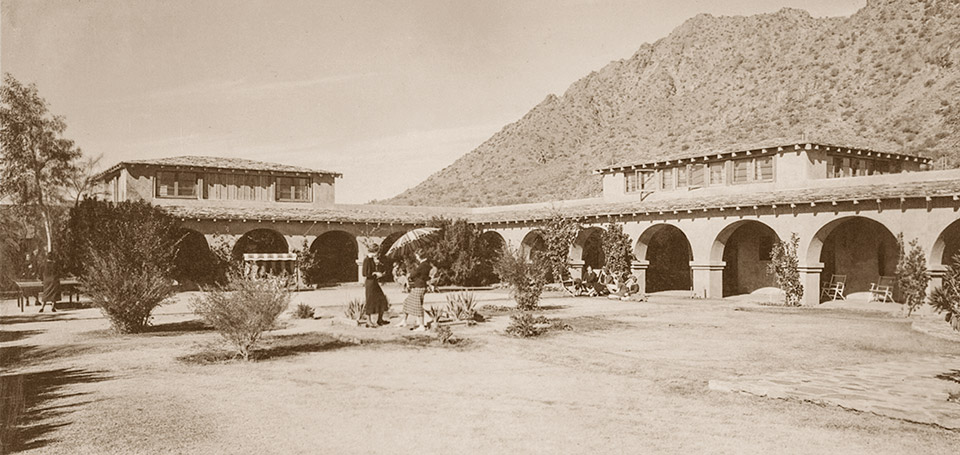
Charles Orme Jr., or “Charlie,” recalled the school had seven students the first year: himself, his brother Mort and five of the head farmer’s children. From the beginning, students milked cows, gathered eggs, worked in the carrot patch and helped maintain vehicles and machinery. They helped with spring and fall roundups, making up lost school time on Saturdays.
Students also mounted up for field trips and rodeos and made use of their surroundings. In 1959, under the direction of a Museum of Northern Arizona archaeologist, they helped excavate a Yavapai cave.
Returning to Orme after his graduation from Stanford, Charlie became headmaster in 1945, and over the next 42 years, he built a national reputation for the school. “Charlie was larger than life to me,” says Terry Greene Sterling, who attended Orme from age 10 until her high school graduation in 1966. “And he believed in the development of the whole child.”
Academics were rigorous, and the days were long and structured, with daily chores, a mandatory activity and a two-hour supervised study hall each night. Even so, there was time to appreciate the natural beauty that surrounded them. “We would just go into this beautiful landscape almost every day and ride,” Greene Sterling says.
Periodically, students piled into cattle trucks on “caravans” to explore the Southwest and northern Mexico. “And they gave us little challenges that we had to overcome,” Greene Sterling says. “Roundup was one of the real growth opportunities.”
Ronald Reagan and Jimmy Stewart came often to visit their kids at Orme, and both gave commencement addresses. “A lot of Midwest industrialists sent their kids there, too,” Greene Sterling says. “There were a lot of big names from all over the country.”
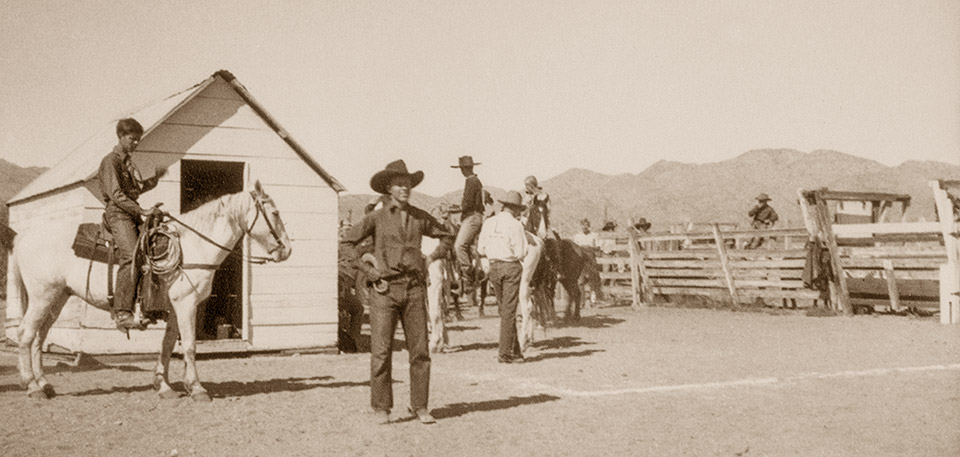
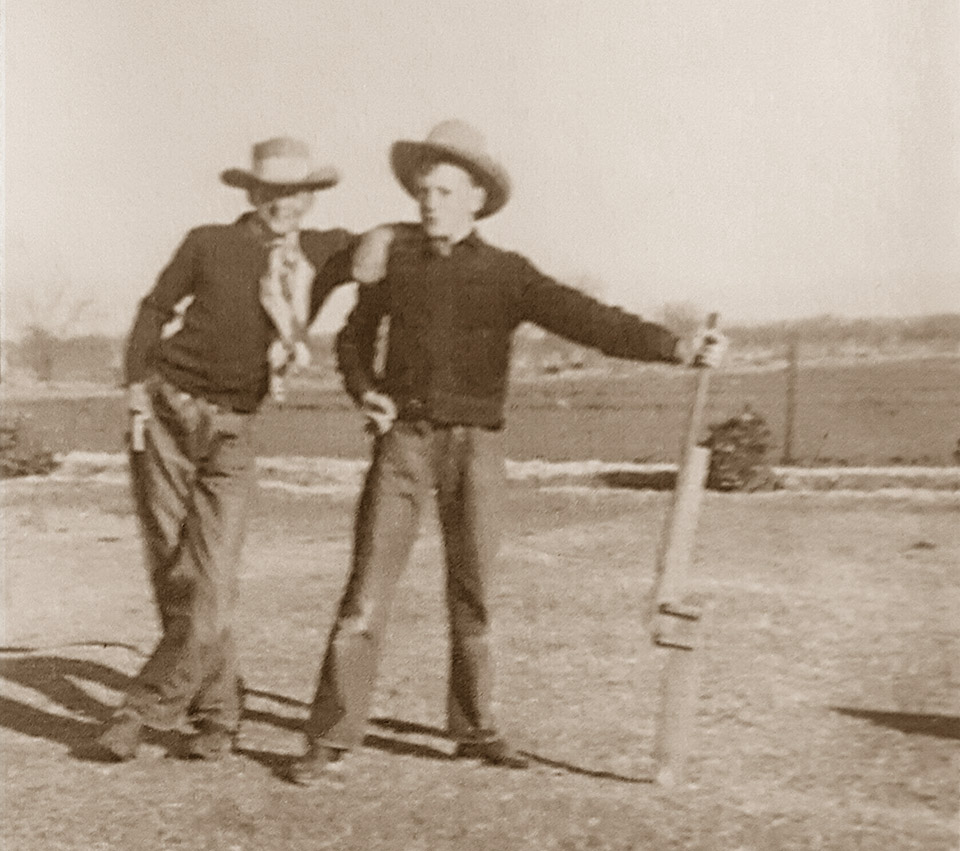
The popularity of ranch schools declined after World War II. Only a handful survived into the 21st century, and only Orme maintained its connection to ranching. The Fenster School pivoted to educating troubled kids, then closed in the mid-2010s. Green Fields filed for bankruptcy and closed in 2019 before reopening as a public charter school. The Judson School closed in 2000.
But ranch schools left an enduring legacy. Teddy Roosevelt’s nephew Nicholas wrote that the Evans School, which closed before the end of World War II, “was a very small school” with “an exceptionally large number of pupils who made their mark in the world.”
Graduates included an editor of The Atlantic Monthly, a professional golfer, an ambassador, a noted historian and a leading anthropologist. One joined the professional rodeo circuit. Tad Nichols, who attended in the early 1930s, landed photos on the covers of National Geographic and Arizona Highways. Many Evans alumni returned to Arizona; several became ranchers, and one served several terms in the state Legislature.
And one, Harvard-educated Hamilton Warren, opened an enduring school in Sedona with the goal of promoting international and intercultural understanding. While not a ranch school, Verde Valley School opened in 1948 with many of the same hallmarks: faculty from elite universities, daily chores, and field trips around the Southwest and Mexico.
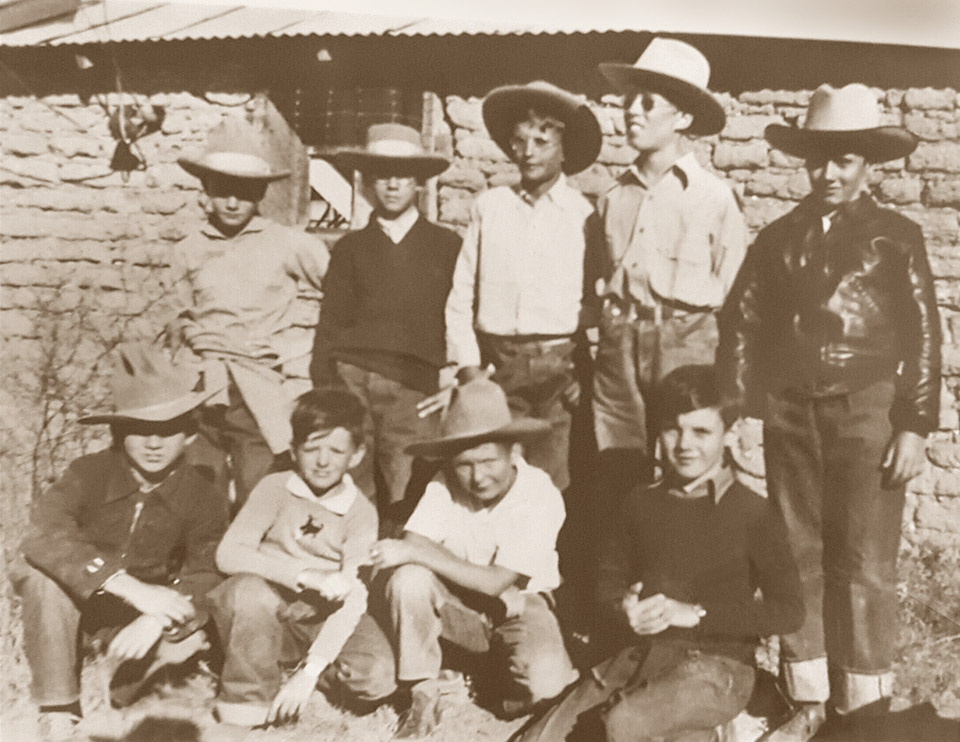
Having turned over the reins of the Orme School to his son, Uncle Chick served in the Arizona Senate. And because Orme welcomed the “moving-picture characters” Evans disdained, it’s no surprise some of its alums pursued acting and other careers in Hollywood. Writer and producer Jeb Rosebrook penned the screenplay for Junior Bonner, filmed in Prescott. Other alumni include a singer-songwriter, an award-winning composer, an astrologist and a NASA scientist. Olympic athlete and noted California architect Richard Jessup married into the family and designed some of the school’s buildings.
In 1962, the Orme School became a nonprofit, legally separating from the ranch, but it has maintained its connection. Students still do chores and attend nightly study hall. Insurance restrictions prohibit participation in rodeos, but students in the horsemanship program compete in equestrian events. Roundup is voluntary. Caravans continue, but students no longer travel in cattle trucks.
“A lot of alumni yearn for the days we had,” says Greene Sterling, now a prominent journalist and author. “The world changes. Those days are gone forever.”

